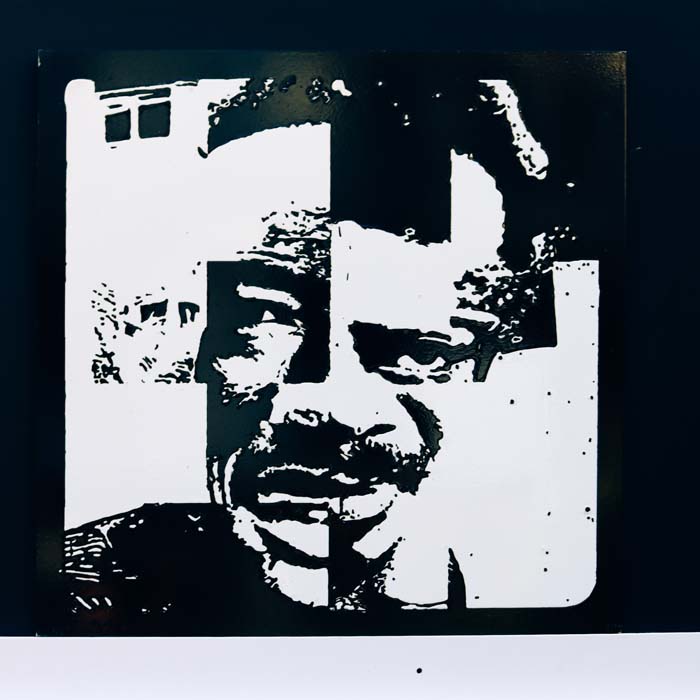60x60cm Acrylic on MDF

Remix (Sierra Leone)
Remix (Sierra Leone -RED) is my way of exploring a much bigger question: “Who am I?” Or maybe more accurately: “Where do I come from?”
Not in a neat or tidy sense, as if to categories myself but in a layered, complicated, and sometimes uncomfortable one.
I grew up Black, British, and connected to Barbados in the Caribbean through my dad. For most of my life, that felt like the whole story. But DNA tracing revealed that my deeper roots lead back to a small region in and around present-day Sierra Leone. Like the vast majority of Black people in the Caribbean, many of us identify as Caribbean, but the reality is that we are African descendants , even if the cultural link was broken generations ago.
I didn’t grow up with any connections to Sierra Leone. To me, it was a faraway place I only knew through news reports about war and conflict. It felt a million miles from England, and even further from the tiny island of Barbados. I couldn’t have been more wrong. And that realisation is part of what shaped and continues to shape this work.
So when I finally visited Sierra Leone , I didn’t go looking for a homecoming or some dramatic sense of return. I went with curiosity, and with an openness to whatever is is that I might find. Even if what I found didn’t fit neatly into ideas of “origin” or “heritage.”
The portraits I took there became the starting point for Remix. I break each image into a grid, fragment the face, shift the pieces, and rebuild them into a new form. The results feel familiar but altered. (A bit like identity itself.) The series touches on individuality, ancestry, history, and the way the past keeps changing each time you revisit it.
There isn’t one meaning here. Remix holds the complexity of identity: the gaps, the fragments, the connections you feel and the ones you don’t, and the space between who we are and where we come from.
Some of the prints are (like this one) in black-and-white, echoing the binary ways race has been viewed simplified, divided, flattened into “one thing or the other.” Others are full of colour, reflecting the vibrancy of Sierra Leone: its fabrics, environment, light, trees, plants, and that deep tropical intensity that surrounds everything near the equator. These two approaches sit side by side, mirroring the layered realities of identity itself.